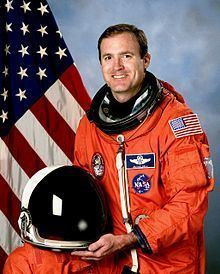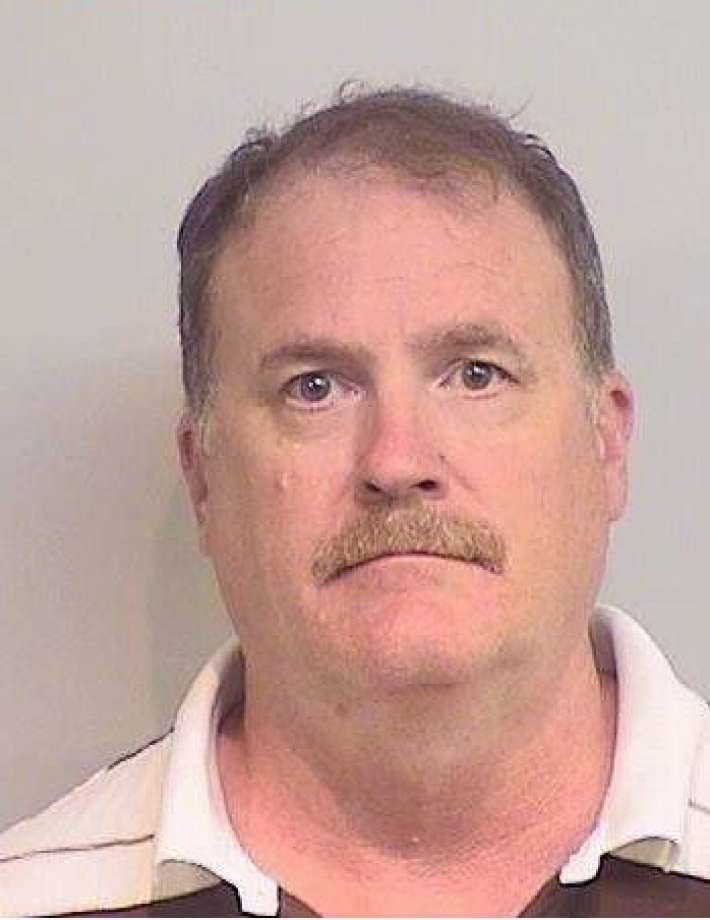Nationality American Time in space 52d 10h 34m Role Astronaut | Other occupation Test Pilot Name James Halsell Status Retired Mission insignia Space agency NASA | |
 | ||
Born James Donald Halsell, Jr. September 29, 1956 (age 69) West Monroe, Louisiana, U.S. ( 1956-09-29 ) Similar People Scott J Horowitz, Kenneth D Cameron, William S McArthur, Donald A Thomas, Gregory T Linteris | ||
2000: Space Shuttle Flight 98 (STS-101) Atlantis (NASA)
James Donald Halsell, Jr. (born September 29, 1956), is a retired United States Air Force officer and a former NASA astronaut. He is a veteran of five Space Shuttle missions.
Contents
- 2000 Space Shuttle Flight 98 STS 101 Atlantis NASA
- 1997 Space Shuttle Flight 85 STS 94 Columbia NASA
- Biography
- Military career
- NASA career
- Spaceflights
- Murder charges
- References

1997: Space Shuttle Flight 85 (STS-94) Columbia (NASA)
Biography

Halsell was born and raised in West Monroe, Louisiana and attended the United States Air Force Academy. Halsell earned a Master of Science in Management from Troy University in 1983 and a Master's degree in Space Operations from the Air Force Institute of Technology in 1985.
Military career
Halsell graduated from the U.S. Air Force Academy in 1978, and from Undergraduate Pilot Training at Columbus Air Force Base, Mississippi, in 1979. An F-4 pilot qualified in conventional and nuclear weapons deliveries, he served at Nellis Air Force Base, Las Vegas, Nevada, from 1980-1981, and Moody Air Force Base, Valdosta, Georgia, from 1982-1984. In 1984-1985, he was a graduate student at the Air Force Institute of Technology, Wright-Patterson Air Force Base, Dayton, Ohio. He then attended the Air Force Test Pilot School at Edwards Air Force Base, California, and during the next four years he performed test flights in the F-4, F-16 and SR-71 aircraft. Halsell retired from the Air Force in July 2004.
NASA career
Selected by NASA in January 1990, Halsell became an astronaut in July 1991. A five flight veteran, Halsell has logged over 1,250 hours in space. He was the pilot on STS-65 (July 8–23, 1994) and STS-74 (November 12–20, 1995), and commanded STS-83 (Apr 4-8, 1997), STS-94 (July 1–17, 1997) and STS-101 (May 19–29, 2000). From February–August 1998, he served as NASA Director of Operations at the Yuri Gagarin Cosmonaut Training Center, Star City, Russia. Halsell also served as Manager, Shuttle Launch Integration, Kennedy Space Center, Florida, from July 2000-January 2003. Halsell was Space Shuttle Program manager for launch integration at the Kennedy Space Center from 2000–2002, responsible for giving the "go for launch" on 13 Shuttle missions. After the Columbia accident, he led the NASA Return to Flight Planning Team, responsible for converting the recommendations of the accident investigation board into Shuttle Program actions that resulted in resumption of missions in 2005. Following the Columbia accident, Halsell led NASA’s Space Shuttle Return-to-Flight Planning Team. He then served as the Assistant Director for Aircraft Operations, Flight Crew Operations Directorate. Halsell retired from NASA in November 2006 to accept a position with ATK Launch Systems where he served as Vice President, Space Exploration Systems, and was the ATK site manager at Marshall Space Flight Center, Huntsville, AL.
On October 10, 2011, Halsell joined Dynetics, Inc., as a technical director in their Space Division.
Spaceflights
STS-65 flew the second International Microgravity Laboratory (IML-2). During the 15-day flight the crew conducted more than 80 experiments focusing on materials and life sciences research in microgravity. The mission was accomplished in 236 orbits of the Earth, traveling 6.1 million miles in 353 hours and 55 minutes.
STS-74 was NASA's second Space Shuttle mission to rendezvous and dock with the Russian Space Station Mir. During the 8-day flight the Atlantis crew successfully attached a permanent docking module to Mir and transferred over 2,000 pounds of food, water and scientific supplies for use by the cosmonauts. The STS-74 mission was accomplished in 129 orbits of the Earth, traveling 3.4 million miles in 196 hours, 30 minutes, 44 seconds.
STS-83, the Microgravity Science Laboratory (MSL-1) Spacelab mission, was cut short because of problems with one of the Shuttle's three fuel cell power generation units. Mission duration was 95 hours and 12 minutes, traveling 1.5 million miles in 63 orbits of the Earth.
STS-94, a re-flight of the Microgravity Science Laboratory (MSL-1) Spacelab mission, focused on materials and combustion science research in microgravity. Mission duration was 376 hours and 45 minutes, traveling 6.3 million miles in 251 orbits of the Earth.
STS-101 was the third Shuttle mission devoted to International Space Station (ISS) construction. Objectives included transporting and installing over 5,000 pounds of equipment and supplies, and conducting a space walk. The mission was accomplished in 155 orbits of the Earth, traveling 4.1 million miles in 236 hours and 9 minutes.
Murder charges
On June 6, 2016, Halsell was charged with two counts of murder as a result of an alleged DUI crash which killed two automobile passengers in Tuscaloosa, Alabama. According to Alabama Senior Trooper Reginal King, both excessive speed and alcohol were contributing factors in the collision. After booking, Halsell was released on a $150,000 bond.
On September 1, 2016, Halsell was indicted for the traffic deaths.
